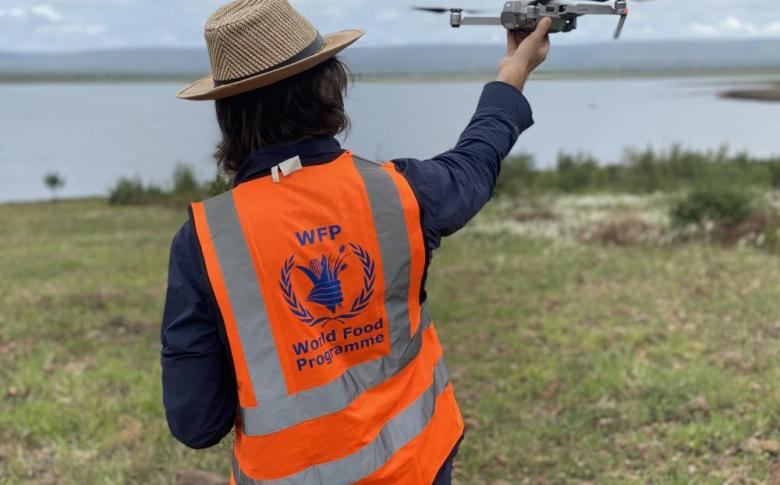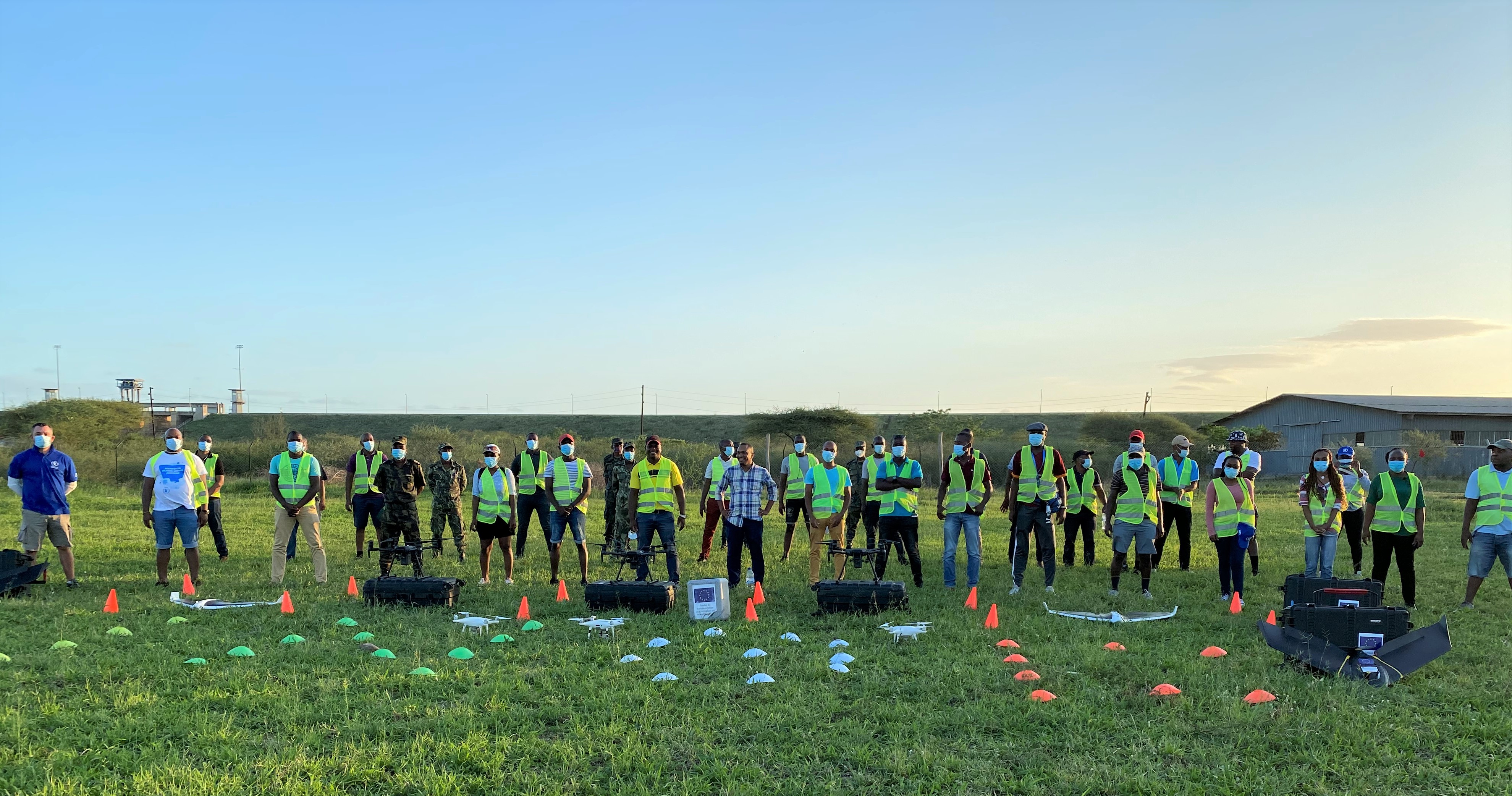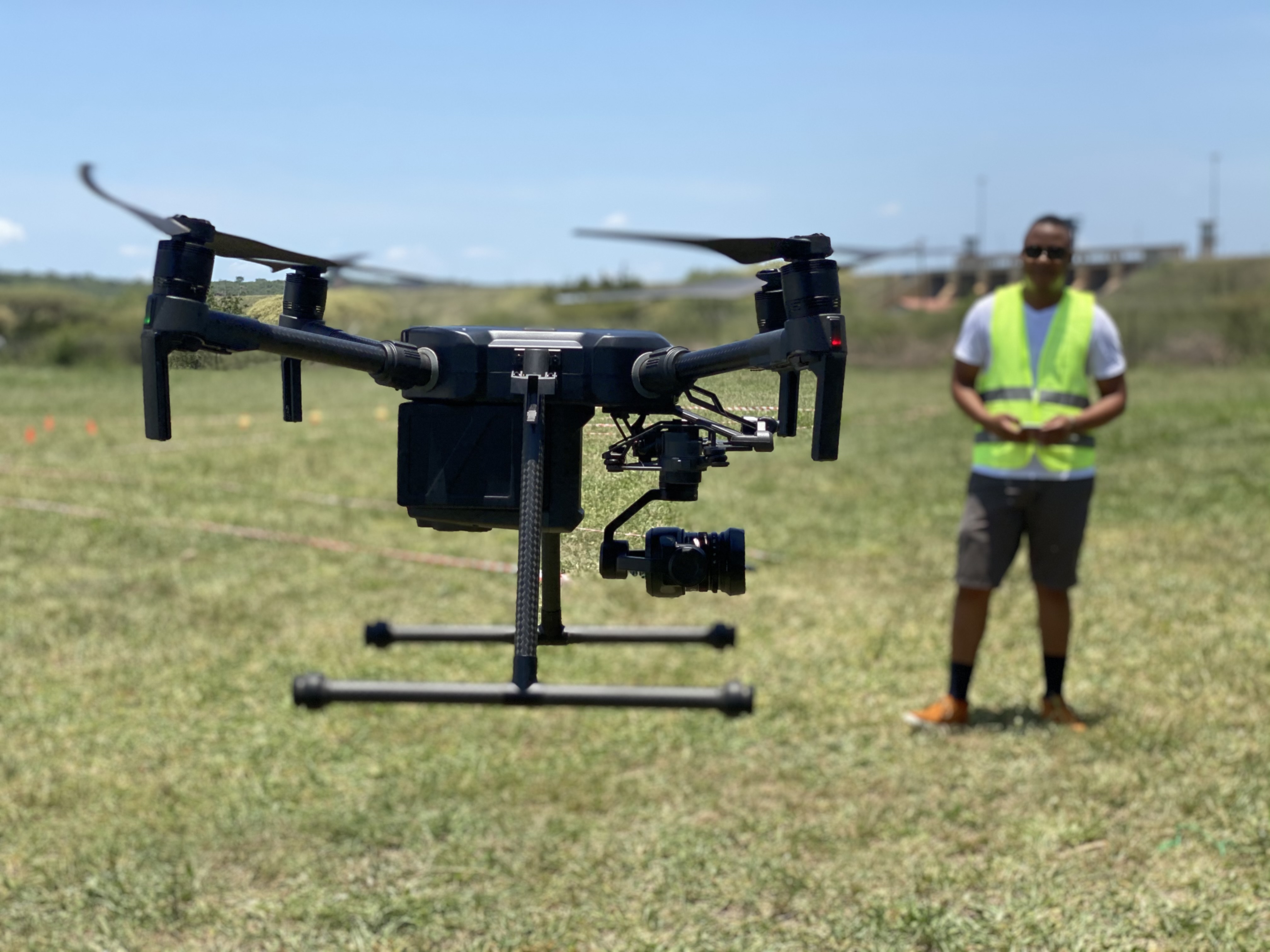Charting a flightpath for humanitarian drones: Technical Working Groups shape protocols even before takeoff

By Masa Sabbah
Drones are a powerful technology for humanitarians because they save time when it is needed most. Work that once took days, like search and rescue and damage assessment after disasters, are reduced to hours with drones.
After a decade of experience, the benefits of drones in emergency response are clear, but humanitarians are still pushing to do more to define what it means to deploy them safely, ethically, responsibly and in a coordinated way.
“We should shape technology to serve humanitarian objectives rather than letting technology shape humanitarianism. This is an important distinction,” says Denise Soesilo, Co-founder of Outsight International, a non-governmental organization.
The WFP Drones team has started molding these much-needed drone protocols with Technical Working Groups drawing over 50 experts from government, air safety, non-governmental organizations, academic institutes, private sector, and UN agencies.
The working groups, which are made possible with funding from the UK Foreign, Commonwealth and Development Office (FCDO), span the critical areas of Regulations and Operation, Imagery, Ethics and Connectivity.

From the ground up
Drones must be operated safely and be aligned with national and international aviation standards – this is the basic groundwork that needs to be laid before a drone can take off.
Through the working group on Regulations and Operations, WFP Aviation Safety is developing capacity building activities and remote pilot training standards to ensure drone pilots have the right skills before they fly.
After an earthquake, cyclone or flood, drones give an incredibly detailed, crystal-clear birds eye view of risks and destruction. When used in tandem with machine learning applications, they can help humanitarians locate people and assess damage in record time.
“Being able to see the affected area from above increases the safety of everyone involved and can aid in the search and rescue of victims trapped in collapsed buildings says Jowett Wong, Emergency Program Officer at Global Medic, who is part of the working group on imagery .
However, the way drone images are processed and shared is just as important as the way they speed up operations. In other words, drones cannot compromise the wellbeing and privacy of the communities they are trying to help.

“Do no digital harm” is a guiding principle for using technology in humanitarianism and is essential to maintaining accountability to affected populations. The working group on ethics will amplify these values by defining best practices in responsible data storage, analysis, and sharing.
WFP has over two decades of experience setting up communications connectivity during humanitarian emergencies in some of the world’s most difficult environments. WFP FITTEST (Fast IT and Telecommunications and Emergency Support Team) and the WFP-led Emergency Telecommunications Cluster (ETC) are already expert players in this area and drones may take connectivity services to new levels.
Attach a connectivity access point to a drone, fly it up to 90 meters high (depending on the equipment) and up to 12 kilometers squared will have a blanket of coverage. This solution, called a flying COW (Connectivity On Wings) is being discussed by the working group on connectivity which will identify the best way to leverage drones in field operations.
“There is no doubt that we will see large scale use of drone services in future emergencies,” says Omar Namaoui, an ETC Consultant taking part in the Connectivity working group. “The ETC can support the capacity building needed to ensure proper coordination and enhance information sharing and collaboration between different stakeholders, with one goal: ensuring that humanitarians gain the most benefits from drone services.”
Checks and balances before flying
Technology often develops faster than our ability to grasp all its implications – a sentiment shared by several experts involved in the technical working groups. As Jowett Wong puts it: “[drones] are developing at a very quick pace, so we need to be able to define how to best use the technology and evolve our practices by learning from each other.”
Drones are tipped to play an increasing role in efficient and effective humanitarian response. “I see the working groups as an essential part of the process to authoritatively define standard operating procedures and barriers, as well as important follow-up work for the deployments,” says Denise Soesilo.
The inclusive conversation started by the WFP Drones team has come at exactly the right time.